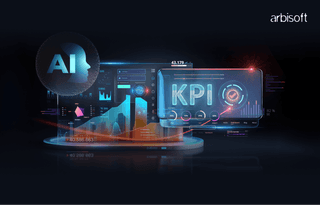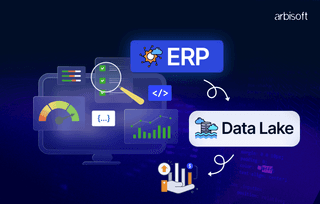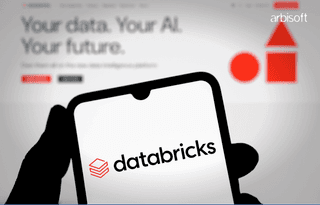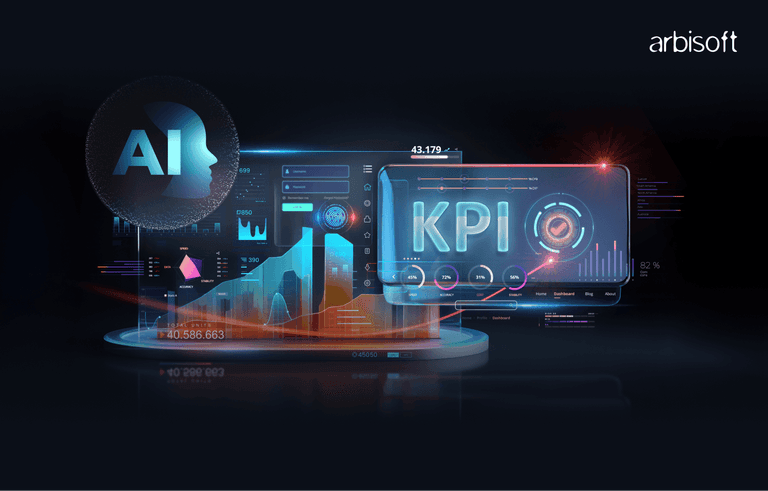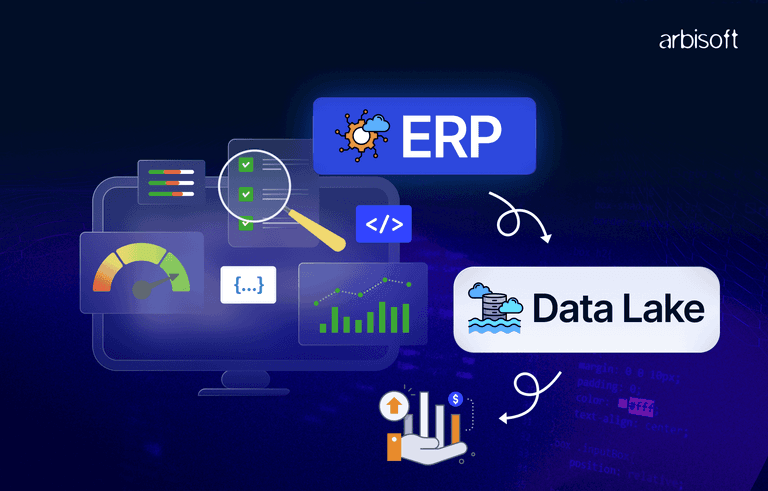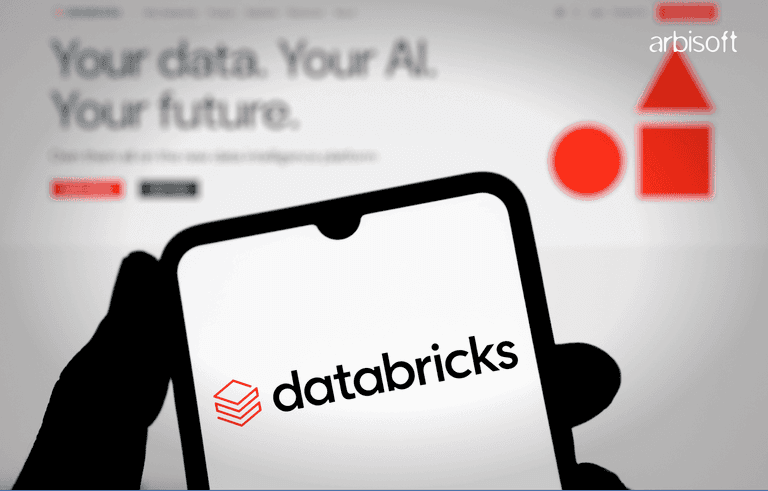We put excellence, value and quality above all - and it shows




A Technology Partnership That Goes Beyond Code

“Arbisoft has been my most trusted technology partner for now over 15 years. Arbisoft has very unique methods of recruiting and training, and the results demonstrate that. They have great teams, great positive attitudes and great communication.”
How Can Predictive Analytics Solutions Prevent IT Outage and Minimize Downtime?

I’ve seen it happen more times than I’d like. Systems that ran fine yesterday suddenly grind to a halt. Operations stop. Customers get frustrated. And teams scramble to figure out what went wrong.
The reality is, IT outages are rarely random. There are always early signs—you just have to be looking for them. That’s where predictive analytics steps in, helping you detect those signs before they spiral into a costly IT downtime event.
The Growing Problem: Understanding IT Outages and Their Costs
We’ve touched on the frustration. Now let’s explore the scope.
An IT outage doesn’t just slow productivity—it can halt entire operations. Systems, applications, and processes stop talking to each other. Internal teams lose access to the tools they need, while customers face service delays or complete disruption. The cost of IT downtime isn’t just about lost work hours; it includes reputational damage, disrupted client relationships, and recovery expenses.
Understanding the impact is the first step to prevention. Once you know what’s at stake, it becomes clear why proactive strategies are no longer optional. Which leads us to the next point—how preventing outages changes the game entirely.
The True Cost of IT Downtime for Your Business
If you’ve ever had to explain downtime to a board or client, you know it’s not a comfortable conversation.
The visible impact—systems going offline—is only the tip of the iceberg. Beneath that are hidden consequences: data integrity risks, delayed project timelines, operational backlogs, and strained vendor relationships. The cost of IT downtime often extends weeks or months beyond the outage itself.
Addressing downtime effectively requires a structured prevention strategy. And that starts by knowing the difference between downtime you can control and downtime you can’t.
Downtime vs. Maintenance: What’s the Difference?
We’ve looked at what downtime can do. Now let’s clarify the terms.
Planned maintenance is controlled and expected. It’s when you take systems offline on your schedule, communicating clearly with stakeholders to minimize impact. Downtime, on the other hand, is unplanned and often chaotic. It forces teams into reactive mode and disrupts business continuity.
The goal for any IT leader is to shift as much unplanned downtime as possible into the “planned” category. That shift is where predictive analytics solutions start to show their real value.
Aggravating the Issue: Challenges with Reactive Maintenance and Legacy Systems
We’ve identified the goal—now let’s talk about what gets in the way.
The reactive approach to outages has one major flaw: it deals with problems after they occur. By the time alerts are triggered, damage is already underway. This approach also creates fatigue among IT teams, who are constantly in crisis mode.
Legacy systems add another layer of difficulty. They often operate in silos, making it difficult to get a unified view of system health. Integrating modern monitoring tools can be challenging, especially if the systems weren’t designed with interoperability in mind. Overcoming these challenges is essential before predictive analytics can be fully effective.
The Promise of Predictive Analytics: Turning Proactive to Preventive
We’ve discussed the limitations of reactive models. Now let’s look at the alternative.
Predictive analytics solutions transform maintenance from a reactionary process into a proactive one. By analyzing historical and real-time system data, these tools identify conditions that typically precede failures. Instead of waiting for a system crash, IT teams can address vulnerabilities while systems are still stable.
This shift from reactive to preventive maintenance not only improves uptime but also extends the lifespan of hardware and software. That brings us to the practical question: how do you implement predictive analytics effectively?
Essential Steps for Predictive Analytics Implementation
We’ve covered the “why.” Here’s the “how.”
First, ensure you have clean, reliable data. Incomplete or inaccurate data can lead to false predictions. Next, select predictive analytics solutions that integrate seamlessly with your current infrastructure. Compatibility reduces disruption and accelerates implementation.
Finally, secure organizational buy-in. This includes IT managers, operations teams, and cybersecurity professionals. Predictive analytics requires cross-functional cooperation, and alignment at the start will save time and effort later. Once you have the right foundation, you can begin applying predictive analytics to preventive maintenance strategies.
For organizations looking to apply these principles with real-world tools, Arbisoft's predictive analytics solutions can help transform raw data into actionable intelligence, giving IT teams the foresight to prevent unplanned downtime and maximize operational stability.
How Predictive Maintenance and Application of AI Prevent Unplanned Downtime
We’ve set up the implementation framework—now let’s focus on the application.
AI-powered predictive maintenance uses algorithms to monitor performance patterns across systems, servers, and applications. By learning what “normal” looks like, these systems can quickly spot deviations. This is how AI can be used in predictive maintenance to intervene early, preventing system instability from escalating into a full-blown outage.
The result is simple: fewer emergency interventions, reduced IT downtime, and more predictable maintenance schedules. Predictive maintenance reduces downtime not by working faster after the fact, but by preventing the problem altogether.
Seamless Integration and Vendor Support: Key Success Factors
We’ve explored the technical benefits—now let’s talk about the human side of success.
No predictive analytics strategy works in isolation. Effective integration requires cooperation between internal teams and external vendors. The right solution will provide APIs and integration tools for older systems, as well as responsive vendor support to troubleshoot challenges.
Strong service-level agreements (SLAs) are critical here. They ensure that when issues arise, response times are fast and solutions are thorough. With integration and support in place, you’re ready to show stakeholders why predictive analytics is worth the investment.
If your predictive analytics strategy involves outside expertise, it’s worth knowing how to evaluate whether your machine learning consulting company truly understands your use case. Our guide on assessing ML consultants can help you choose a partner who aligns with your business needs.
Making the Case: Demonstrating ROI and Building Stakeholder Consensus
We’ve discussed the operational case—now it’s time to make the business case.
To win stakeholder support, frame predictive analytics in terms they value: stability, customer satisfaction, and cost avoidance. Highlight how these solutions reduce recovery time, protect brand reputation, and support compliance.
Bring in multiple perspectives when making the case—IT, security, and operations all benefit differently from improved uptime. Once decision-makers see the organizational impact, they’re more likely to commit resources to long-term adoption.
Taking Action: Next Steps for IT Leaders Seeking Predictive Analytics in 2025
We’ve covered the reasons, the process, and the value. The last step is action.
Start small with a single system or process that would benefit from improved uptime. Measure the results, refine your approach, and then expand. Communicate early wins to maintain momentum and show value across departments.
The difference between downtime and maintenance often comes down to preparation. In 2025, predictive analytics solutions give IT leaders the tools to see problems coming, address them on their own terms, and keep operations running smoothly. That’s not luck—it’s strategy.
If you’re building predictive analytics into a wider digital strategy, Arbisoft's custom software development services can create tailored platforms that integrate seamlessly with your infrastructure, streamline operations, and deliver measurable ROI.
FAQs
1. How does predictive analytics help prevent IT outages?
It uses historical and real-time system data to detect early warning signs, such as unusual performance metrics or error patterns, before they develop into full outages. This allows IT teams to take preventive action while systems remain operational.
2. What is the difference between downtime and planned maintenance?
Planned maintenance is scheduled, controlled, and communicated in advance. Downtime is unplanned, disruptive, and often forces teams into reactive problem-solving. Predictive analytics helps shift more events into the planned category.
3. Can predictive analytics work with legacy systems?
Yes, but integration may require APIs, middleware, or vendor support. Many modern predictive analytics tools are designed to pull data from older systems, though compatibility should be confirmed during selection.
4. What types of data are needed for accurate predictions?
You need clean, complete, and reliable data from system logs, performance metrics, error reports, and usage patterns. Poor data quality can lead to false positives or missed warnings.
5. How does AI enhance predictive maintenance?
AI algorithms learn what normal performance looks like for your systems and flag deviations faster than traditional rule-based monitoring. This allows earlier intervention and fewer emergency fixes.








